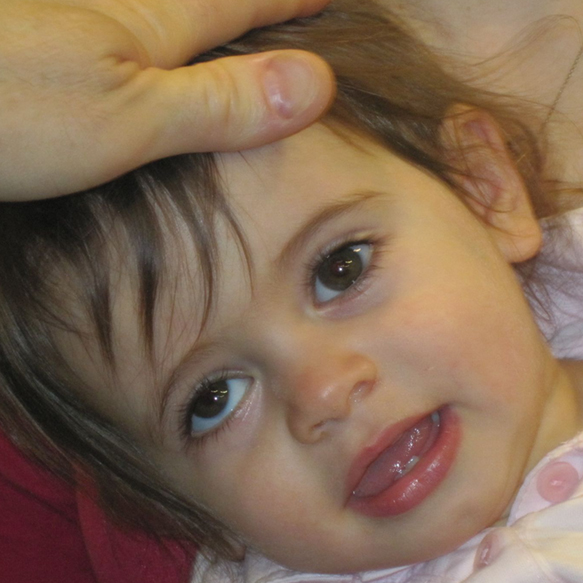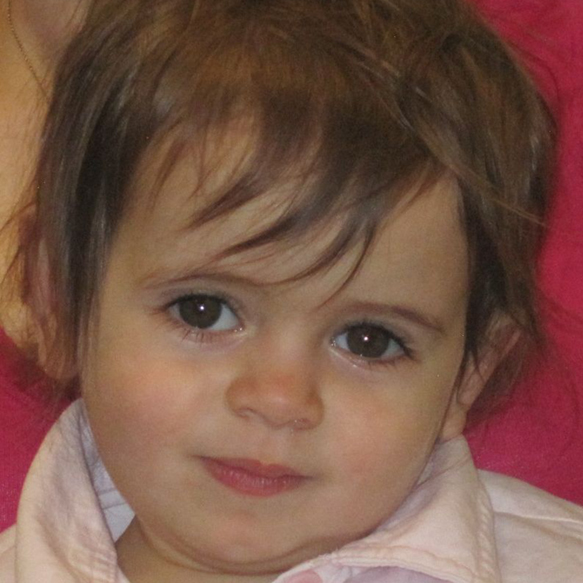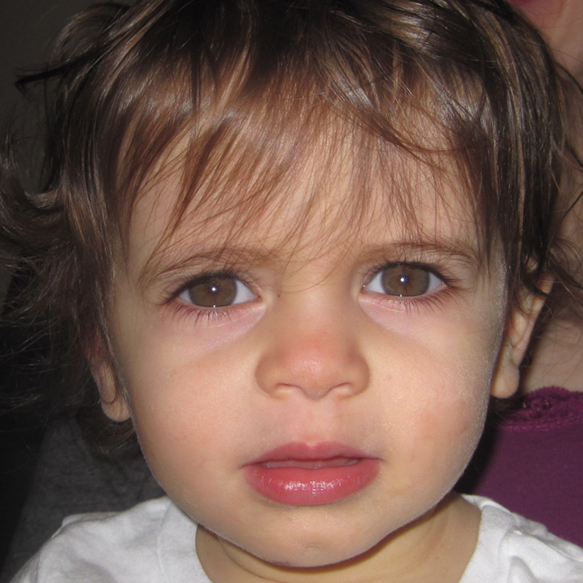Fourth nerve palsy refers to a weakness of the nerve that supplies impulses to the superior oblique muscle, a muscle of the eye which has the main function of moving the eye downwards.

Individuals with a right fourth nerve palsy will have their right eye positioned higher than the left. This misalignment is worse when tilting head towards right.

Individuals with a right fourth nerve palsy will typically maintain a left head tilt to permit normal ocular alignment and binocular vision.

Following eye muscle surgery, the vertical misalignment and abnormal head posture resolves.
WHAT IS FOURTH NERVE PALSY (A.K.A. SUPERIOR OBLIQUE PALSY)?
There are 12 cranial nerves that begin in the stem of the brain and travel to different areas of the head and neck. Each of these nerves has a specific function. The fourth cranial nerve gives impulses to one of the muscles on the surface of the eye. This muscle is called the “superior oblique” muscle.
The main function of the superior oblique muscle is to move the eye downward. As this muscle’s function is weakened with a fourth nerve palsy, the eye tends to drift upwards. The resultant vertical strabismus is termed a “hypertropia”.
Fourth nerve palsy is often congenital and diagnosed in infancy. However, older children and adults can acquire this form of vertical strabismus. Often the signs and symptoms of congenital fourth nerve palsy may not appear until the later childhood or even adulthood years.
Most patients with isolated fourth nerve palsy have no known underlying cause.
What Are The Signs Of Fourth Nerve Palsy?
Adults who have a fourth nerve palsy will frequently observe double vision.
In children and adults, a noticeable vertical deviation of the eyes is not always the initial sign. Rather, an individual with a fourth nerve palsy will often have a habitual head tilt to the side opposite the palsied eye.
This abnormal head position (a.k.a. torticollis) is actually a natural compensation for the vertical strabismus. With the head tilted to the side opposite the palsy, the vertical misalignment of the eyes is least. The head tilt permits the affected child or adult to experience “binocular vision” thus enabling depth perception.
TREATMENT
Eye muscle surgery is generally recommended as the treatment for fourth nerve palsy in children and adults. Following corrective eye muscle surgery for fourth nerve palsy, the associated abnormal head tilt usually disappears.
Before considering this surgery in children, there must not be any evidence of “amblyopia“. This refers to poor vision in one eye due to inadequate visual stimulation (a.k.a. “lazy eye”).
Infants with congenital fourth nerve palsy (or any other type of strabismus) may favor one eye and habitually ignore the other eye. The ignored or deviated eye will likely have amblyopia.
Amblyopia is treated by patching the strong eye to stimulate normal visual development in the weak eye. The proper duration of patching therapy depends upon the degree of amblyopia.
Eye muscle surgery is generally not recommended until the amblyopia is maximally treated.
FREQUENTLY ASKED QUESTIONS
Will My Child With Fourth Nerve Palsy Outgrow This Problem? No.
Will Eye Exercises Help This Problem? No.
Why Is Good Ocular Alignment Important In Childhood?
Aside from the obvious improvement in your child’s appearance when misaligned eyes are corrected, there are other functional benefits to consider.
When a significant ocular misalignment exists in childhood, the developing visual system may not acquire normal binocular vision. Aside from enjoying improved depth perception and fine motor skills, a person with binocular vision tends to maintain good ocular alignment throughout life. Additionally, a child with good ocular alignment is at decreased risk for developing amblyopia.
At What Age Should The Surgery Be Performed?
Most pediatric ophthalmologists will recommend surgical correction of a congenital fourth nerve palsy sometime after age six months. Some children and adults will require more than one strabismus operation to eliminate the strabismus.
Pediatric Ophthalmic Consultants
40 West 72nd Street, New York, NY 10023 | 212-981-9800
The content of this Web site is for informational purposes only. If you suspect that you or your child has any ocular problem,
please consult your pediatrician, family practitioner, or ophthalmologist to decide if a referral to a pediatric ophthalmologist is required.






